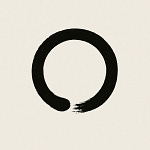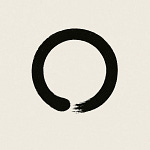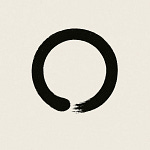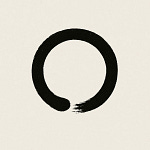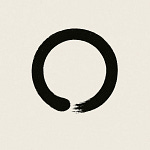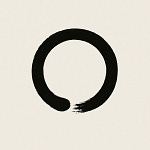This is the fourth day of the October–November 2023, seven-day sesshin.
We're going to spend one more day with Maurine Stuart, reading from Subtle Sound: The Zen Teachings of Maurine Stuart, edited by Roko Sherry Chayat.
Picking up where we left off yesterday—from a talk titled Breathing In, Breathing Out—I'll reread the last paragraph:
"All our teachers—Dogen Zenji, Rinzai, all these wonderful teachers—are saying the same thing: Turn the light around and return to the source where we have always been. How do we do this?
We maintain our thunderous silence, letting go of all words and thoughts, all grasping, all rejection—holding onto no experience, whether wonderful or awful.
We let it go. We wake up to what we have been from the very beginning."
Addiction to Thought and Speech
Last evening, Kanji talked about a Tibetan practice where we recognize our addiction to our own voice—whether speaking aloud or talking in our head.
Speaking personally, it's deeply addictive. Hard to notice in time.
But letting go and returning to silence changes everything.
Even cutting our attachment a little bit is transformative.
Almost everything we do is gradual, the product of faithful, repeated practice.
Letting Go of Improvement
She says:
"Do not compare. This day is like no other day.
This sesshin is like no other sesshin."
Become plain, ordinary, simple.
You have nothing to do. Get out of the way.
Shunryu Suzuki Roshi said:
"When you say 'I breathe,' that 'I' is extra."
When you think, I have a practice or I must do this, you create opposition. You create duality.
Some people come into dokusan and say, I want to do better. I want to become more quiet. I want to succeed.
She says:
"Better get rid of that right away.
Give it up."
Please—no thought of improving your condition.
No thought of good or bad:
Yesterday was terrible.
This morning was clear.
This afternoon will be great.
No thoughts like these.
Just interest in the mind.
Just seeing what's there—not accomplishing something.
Not teaching the dog tricks.
Get to know the mind, obsess over it the way a scientist studies ants.
When you let go of the desire to "make progress," a burden lifts.
Practice becomes freer.
Of course, being human, we pick that burden back up again and again—but we can notice it.
When you are just doing the practice, everything flows.
You surrender to how things are.
Everything Is Grist for the Mill
Roshi Kapleau said:
"It's all grist for the mill."
Pema Chödrön calls it the lion’s roar—giving up the insistence that life must go the way we want.
In interviews, she says, we work together—adjusting posture, breathing, attitude.
But while sitting, give no thought to improving. Just sit.
One teacher said: Enjoy your practice.
If we don't hold onto ups and downs—if we let them exist like our in-breaths and out-breaths—we may taste something.
Many come to sesshin wanting to clean up their lives or get enlightened in a few days.
But seeking to become Buddha creates separation.
We are enlightened from the very beginning.
Believe this.
Have faith in your Buddha nature.
Stories About Zen Teachers
There are many classic Zen exchanges:
Student: I want to become a Buddha.
Teacher: There is no Buddha.Student: I want to attain the Way.
Teacher: There is no Way to attain.Student: I want liberation.
Teacher: Who is holding you back?Student: Shakyamuni Buddha practiced and attained enlightenment!
Teacher: What a pity. I would've given him a good beating and thrown him to the dogs.
These responses aren't disrespectful.
They break attachments in the student's mind.
A mind free of striving is free to practice naturally.
Everyday Life Is Practice
Practice is being in tune with the natural way so our true nature can show itself.
It’s like strength training:
You just do the pushups.
The strength comes naturally.
You don’t think about it while doing it.
Spiritual practice isn’t exotic.
Counting your breath from one to ten is spiritual practice.
Sitting, walking, eating—all practice.
When you respond vividly to life without carrying mental baggage, that's practice.
Those counting breaths find it is exceedingly wonderful.
Counting again and again leads to one-pointed concentration—then breath awareness without counting—then simply being.
Eventually, even the idea of practicing Zen falls away.
Just breathing. Just being. Just this.
Openness and Courage
If you find yourself distracted, you can return to breath counting.
Even advanced teachers like Yasutani Roshi would sometimes do this.
Last night Maurine dreamed she was saying: "Yes, yes, yes."
Say yes to whatever arises.
Even if you can't say yes, notice you’re saying no.
Awareness grows from there.
Zen practice is the practice of saying yes to life as it is.
Compassion and Wisdom
Maurine says:
"This is what we mean by compassion:
Being present with everything, giving ourselves up completely."
The two pillars of Buddhism are karuṇā (compassion) and prajñā (wisdom).
Wisdom without compassion is cold.
Compassion without wisdom becomes sentimentality.
On Zen altars:
Samantabhadra Bodhisattva (compassion) rides an elephant.
Manjushri Bodhisattva (wisdom) rides a lion.
Balancing these in ourselves is everyone’s koan.
The Subtle Action of Inaction
Ordinary acts—getting up, washing your face, going to work—are acts of inaction when done naturally, without self-consciousness.
When we are just walking, just washing, just working—there’s no separation.
The bodhisattva Kannon (Avalokiteshvara) has countless arms to respond to whatever is needed.
We respond spontaneously, not because we must, but because it arises naturally.
This spirit bows in humble gratitude as we become freer and more awake.
Courage, Commitment, and the One Commandment
Zen is a practice of courage.
We have the qualities we need—they emerge gradually.
Before the time of Huineng (Tang dynasty), it was thought you needed deep meditation (Dhyana) before enlightenment.
Huineng taught that wisdom and meditation are inseparable.
Three pillars of Zen practice:
Śīla (moral precepts)
Dhyāna (Zen meditation)
Prajñā (wisdom)
True understanding:
"Prajñā is not something attained after practice.
It unfolds within every act—washing dishes, sweeping floors, breathing."
Everything shines when we open to it.
No Striving, Just Seeing Clearly
We don't "think" our way to enlightenment.
To think "I must get enlightened" is the greatest obstacle.
As Bodhidharma said, when asked who he was:
"No knowing."
We can't quantify intuitive wisdom.
It arises naturally—sometimes in an instant, sometimes over lifetimes.
We just try to see clearly.
French philosopher Paul Valéry said:
"To see is to forget the name of the thing one sees."
When you truly see a flower, the flower sees you.
Practice Is Forgetting Self
Forget about what you want or must get.
Maurine quotes Meister Eckhart:
"The eye with which I see God is the same eye with which God sees me."
True Buddhism is non-dual—no separation between self and others.
Let go of your pain, your opinions, your clinging.
Just dissolve into Mu, into presence.
Precepts and Natural Conduct
Keeping the precepts is not about rigid rules.
It’s living with intuitive wisdom.
When we are hungry, we eat.
When tired, we rest.
When awareness deepens, behavior flows naturally without self-conscious control.
Strict precepts have their place in some Buddhist traditions—but Maurine emphasizes the one commandment:
An intuitive response to life.
When we fully commit, things move for us.
William Hutchison Murray said:
"Until one is committed, there is hesitancy...
The moment one commits, Providence moves too."
Roshi Kapleau's strong commitment opened the way for many.
Closing
Time is up.
Let’s stop and recite the Four Vows.




